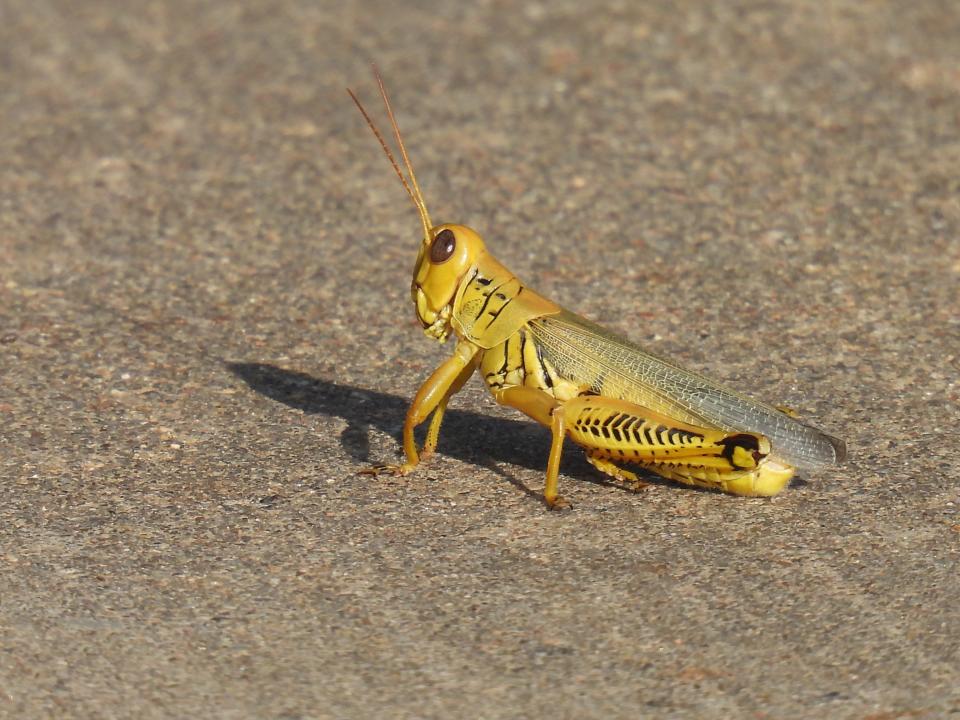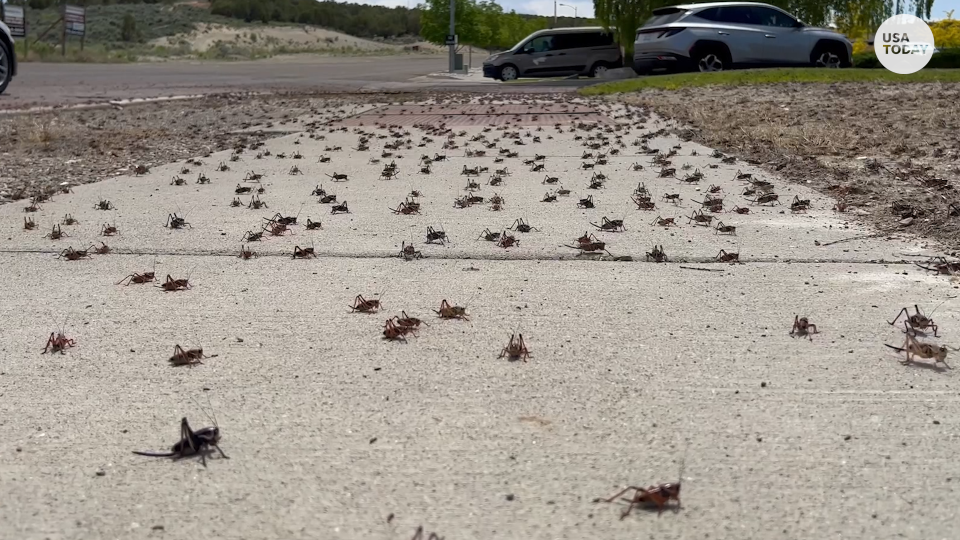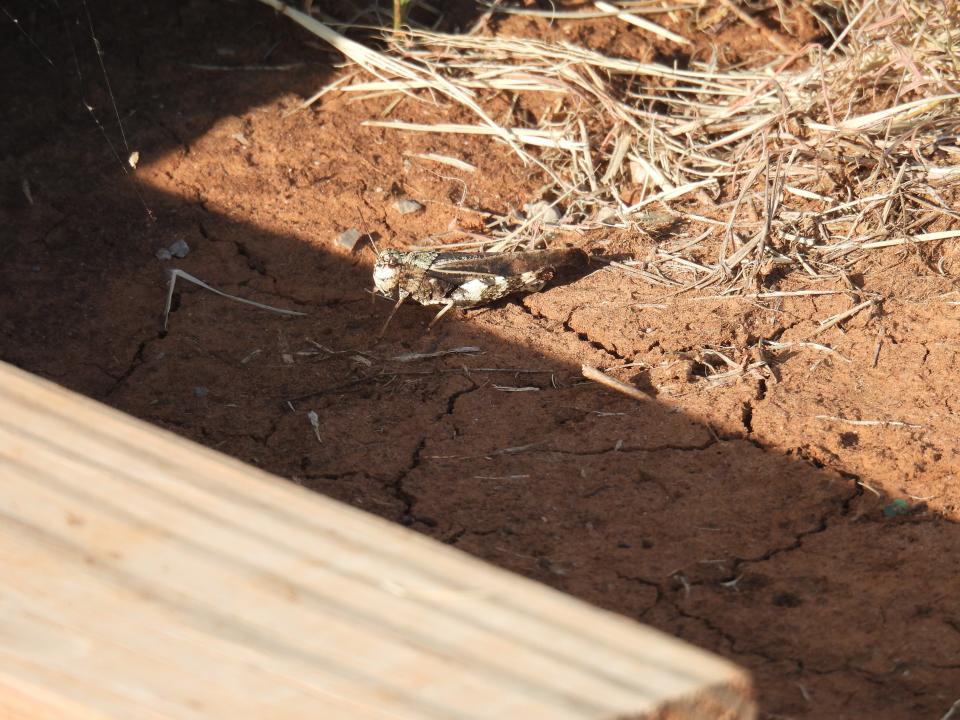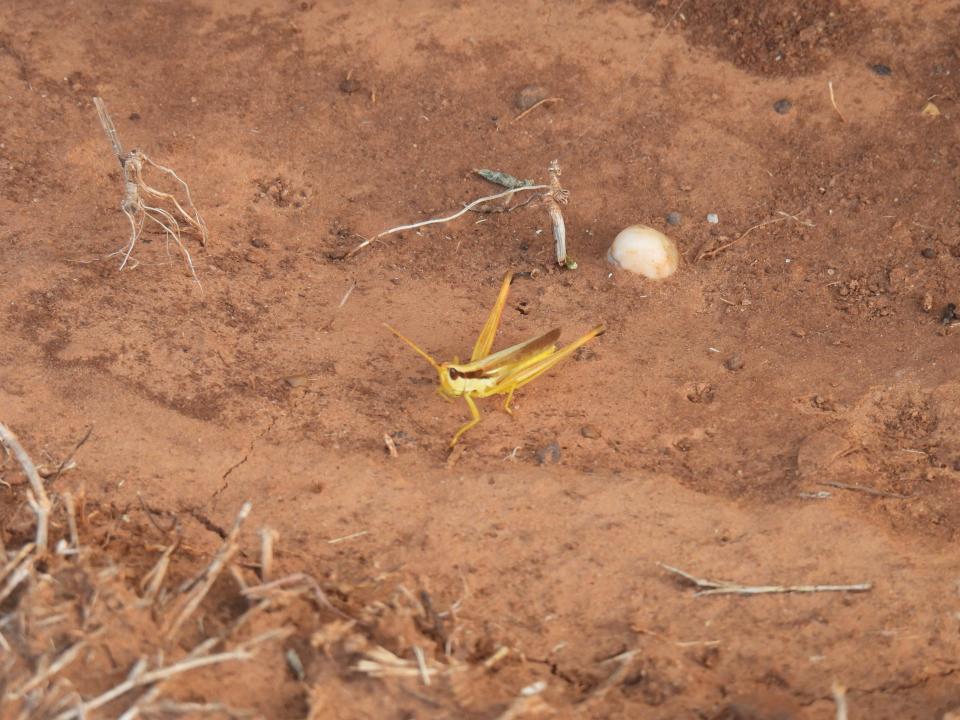Crickets and grasshoppers everywhere!
Crickets and grasshoppers everywhere!
Is this an unusual occurrence or summer status quo?
Over the past few weeks, I’ve noticed an abundance of grasshoppers emerging from my lawn, pastures, and fields! Additionally, some of my neighbors have commented and complained about large numbers of crickets invading their properties and, in some instances, their homes, garages, shops, and other buildings! You might ask, “Do we have a ‘plague of locusts’ descending upon us in the northcentral Texas and southwestern Oklahoma region and is this an unusual occurrence?”

Over the past few weeks, I’ve noticed an abundance of grasshoppers emerging from my lawn, pastures and fields! Additionally, some of my neighbors have commented and complained about large numbers of crickets invading their properties and, in some instances, their homes, garages, shops, and other buildings! You might ask, “Do we have a "plague of locusts" descending upon us in the north central Texas and southwestern Oklahoma region and is this an unusual occurrence?”
Crickets and grasshoppers are scientifically classified within the insect order Orthoptera (= straight-winged; meaning their wings lay straight when folded). For convenience and general identification, the many species of grasshoppers, katydids and crickets (there are over 500 different species of grasshoppers in North America!) are sometimes placed into groups referred to as ‘long-horned’ and ‘short-horned’ grasshoppers; depending upon the length of their antennae. Their general characteristics include three pairs of jointed legs, with the hindmost femora often greatly enlarged for enhanced jumping; the presence of large, multifaceted, compound eyes (with a few exceptions); and three distinct body segments: the Head (containing the eyes, one pair of antennae, and well-developed chewing mouthparts), the middle body segment (the ‘Thorax’) containing the legs and wings, and the hindmost segment (the ‘Abdomen’) containing the reproductive, excretory, and respiratory organs. Crickets and grasshoppers have specialized ears called ‘tympana’ and sound-producing organs located on their legs and wings called stridulatory organs. A grasshopper’s stridulatory organs are located on the hind legs and front wings; whereas, crickets’ stridulatory organs are only on their wings. Species-specific sounds are produced as the insects call to each other by rubbing these specialized structures together! The clicking and/or popping sounds, called crepitation, made by flying grasshoppers are produced when rigid, hind-wing veins flex and stretch the wing’s membranes.

Even though their ordinal name refers to wings, not all grasshoppers and crickets have functional wings! Examples of flightless grasshoppers and crickets include the large Lubber Grasshoppers, Mole Crickets and Camel Crickets. Immature grasshoppers and crickets (referred to as ‘Nymphs’) lack fully-developed wings and spend most of their time resting upon and feeding on plants and other vegetable matter. Nymphs often go largely unnoticed as they forage within piles of leaf litter and brush, in grassy areas, or within burrows. The primarily diurnal grasshoppers are herbivorous and eat a great variety of plants and vegetation including the leaves and young stems of grasses, shrubs, and trees we have planted and cultivated. Crickets, on the other hand, are more nocturnal omnivores and scavengers feeding upon both plant and animal matter (sometimes even consuming other crickets when food supplies begin to run out.)

Returning to the main topic and questions, the noticeable increase in crickets and grasshoppers in our area is most likely due to mild winter weather and a significantly wetter spring season as opposed to last year’s weather conditions. The mild winter and wetter spring resulted in higher numbers of hatching eggs; which were laid in the soil during the previous summer and fall. Weather conditions have also favored vegetation growth; thus, resulting in increased food supplies and better survival of cricket and grasshopper nymphs. I presently have several different types of grasshoppers at my location; including what are termed Banded-winged, Slant-faced, and Spur-throated Grasshoppers and Meadow Katydids (grouped according to their different body shapes and colors and flight/behavior.) Field Crickets seem to be the most abundant type of cricket benefitting from this year’s milder weather conditions.

Will the grasshopper hoards transform into swarms of voracious, flying locusts? The answer is: Probably not. Swarms of locusts develop because of appropriate weather conditions, food supplies, and physical contact (because of increasing populations in an area) between members of specific grasshopper/locust species. These conditions cause the nymphs to develop into what is called the ‘gregarious’/social form (or morphotype) of its specific species. Only a few grasshopper species can transform into swarming locusts and the last North American type of grasshopper known to undergo the locust stage (the Rocky Mountain Locust) became extinct around the beginning of the 20th Century. At the present time (and excluding Antarctica), North America is the only continent without a ‘locust’ species of grasshopper.
Even without becoming locusts, the large numbers of grasshoppers and crickets can damage our pastures, fields, gardens and yards during summer and fall months. However, we aren’t helpless against these pests! We can employ a variety of practices and products to reduce numbers of crickets and grasshoppers on our properties.
Whenever practicable, tilling the soil (fields, flowerbeds, garden areas, etc.) during fall and winter months helps expose the eggs to unfavorable temperatures and conditions and prevent hatching. Also, tall grasses and other ‘trap plants’ can be planted around the borders of yards, gardens and other areas to attract grasshoppers and crickets to the trap plants instead of more desirable vegetation and crops. An alternative method is planting Sage, Lantana, Verbena, Salvia, and/or Juniper in order to repel grasshoppers. An added benefit of these plantings is the potential increase of pollinating species and beneficial insects and arthropods that will help naturally control cricket and grasshopper populations.
Several types of dusting powders, granules and liquid sprays are available for general control of insect pests. These products may be classified as organic (including diatomaceous earth, garlic, pepper, and vinegar sprays; Neem oil; etc.) or non-organic (containing bifenthrin; carbaryl; malathion; permethrin; etc.) insecticides. Dusting powders and baits are most effective when crickets and grasshoppers are in their nymphal stages; whereas, sprays may be more effective when the pests are mature. A negative aspect of using these insecticides is their non-specificity. Most dusting powders, granules, and sprays will also kill and/or discourage beneficial insects and arthropods as-well-as the targeted crickets and grasshoppers; resulting in less effective, natural, biological controls in our yards, gardens, fields, and pastures. Baits using the fungal spores of Nosema locustae are an exception. N. locustae is a fungus that parasitizes and kills only grasshoppers and crickets!
Therefore, don’t despair if you have large numbers of crickets and grasshoppers in your vicinity! Remember that they are seasonal insects and will decline and disappear over the fall and winter months and, before that time, you can try different approaches to reduce their numbers and impacts on your most-prized plants!

Jim Goetze is a retired professor of biology and former chairperson of the Natural Sciences Department of Laredo College with an avid interest in all aspects of the natural world. He can be contacted at gonorthtxnature@gmail.com
This article originally appeared on Wichita Falls Times Record News: Crickets and grasshoppers descend on North Texas area

